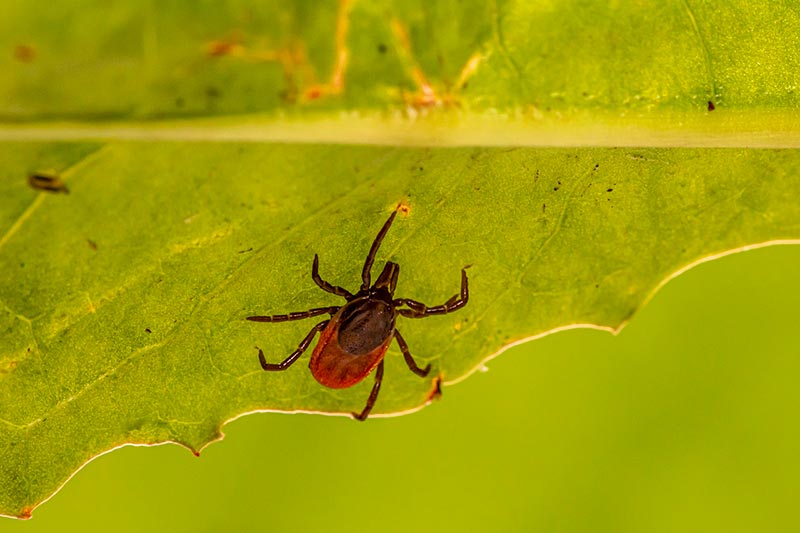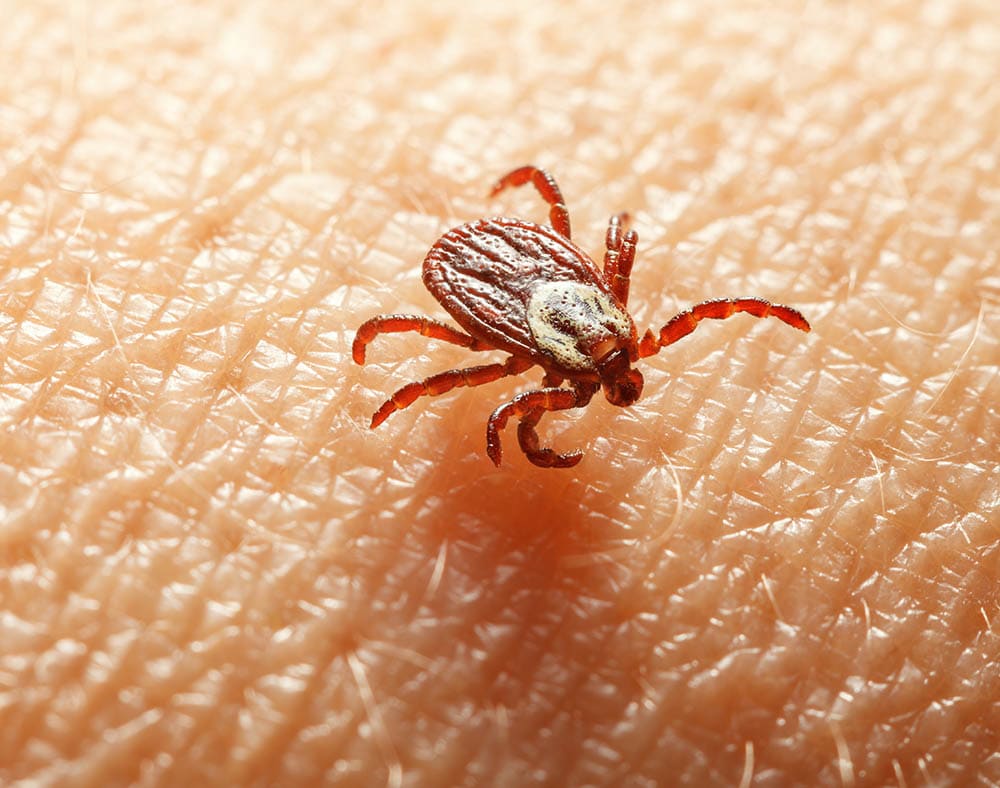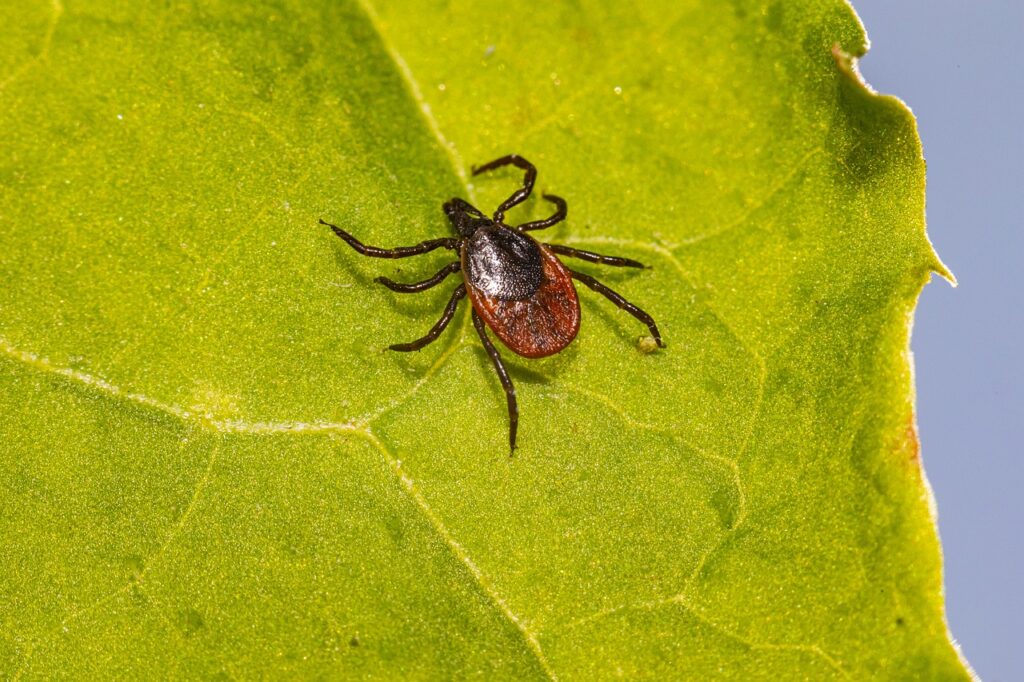3 Types of Ticks in Ohio (With Pictures)
-
Ashley Bates
- Last updated:

If you are an Ohio resident that is quite used to dealing with the warm seasons of the state, you know all about ticks. When your children come in from playing outside, you check them head to toe to ensure they don’t have an unwelcome visitor. And you need to make sure to protect your pets as well.
Here we’re going to learn about the three ticks in Ohio and the potential dangers of each one. Educating yourself about the risks of ticks is essential because they carry very dangerous diseases. So here we will go over how to manage, stand formed, and reduce contact with ticks lurking in your yard.
The 3 Types of Ticks in Ohio
There are three different kinds of ticks in Ohio, each posing its own concerns for wildlife and humans alike. Ticks are the definition of a bloodsucking parasite, as this is how they sustain themselves.
Some are active throughout the year in Ohio, while others are more prevalent in warm seasons. We will learn in detail about these three ticks so you can get a visual aid of what to look for and how to identify them.
1. American Dog Tick

American dog ticks are heavily prevalent in Ohio. They can be found on the outskirts of woodlands and tall grasses are usually active in the early spring to summer months.
Male and females behave differently, but they prefer the same host. They can get on everything from rodents to livestock, but much prefer hosts like raccoons, domestic pets, skunks, and possums. In the larva stage, they infest smaller animals like rats, mice, ground squirrels, voles, and other animals of this size.
Male and female American dog ticks operate slightly differently. Males will feed on blood, but they do not become engorged like the females. Males will feed for a brief two days, disconnect from the host, and wander around on the body to find an available female who is also feasting.
Once he finds the female, they mate during her feeding process. She then continues to feed until she is completely engorged. When she is full, she will drop from the body of the post and lay up to 4,000 eggs.
The American dog tick can survive up to two years without a host. But when they finally attach to a host, the females feed for up to 8 days, nearly quadrupling in size.
If you spend a lot of time outdoors in the warm Ohio months, you will likely encounter these ticks between March and August. Disease transmission is entirely possible with this tick species.
- Rocky Mountain Spotted Fever
- Tularemia
Rocky Mountain Spotted Fever
Rocky Mountain spotted fever is a severe complication of tick bite. It can cause various symptoms that can affect your entire body and require medical treatment. Typically it starts with a fever but transmits into a rash two to four days after the fever begins.
It has a very characteristic rash that is present in splotches or pinpoint dots. The inflammation happens with nearly all Rocky Mountain spotted fever cases, but it is not the case in rare instances.
This complication can cause permanent damage to the body, such as amputation of limbs, paralysis, changes in mentality, and hearing loss.
- Fever
- Headache
- Nausea
- Rash
- Stomach pain
- Joint and muscle pain
- Appetite loss
Tularemia
Tularemia is another potentially severe illness contracted by a tick bite. This particular disease’s primary symptom is exceptionally high fever, sometimes exceeding 104 degrees. The symptoms can be mild, too severe, and occasionally fatal.
Ticks aren’t the only ones that can carry this potential disease. It can also transmit through deer fly bites. The bacteria enter the body, causing a variety of complications. You might notice an ulcer at the bite site, which is often the first symptom, followed by fever.
- Swollen lymph nodes
- Cough
- Chest pain
- Inflamed eyes
- Sore throat
- Diarrhea
- Pneumonia
- Chills
- Muscle and joint pain
- Dry cough
- Weakness
Both diseases transmitted by the American dog tick are severe and can be life-threatening. If you suspect you have been bitten, you should receive a medical evaluation to rule out any potential disease.
2. Blacklegged Ticks (Deer Ticks)

Blacklegged deer ticks, or Ixodes scapularis, or another prevalent tick in Ohio. These ticks are generally darker with a brownish black back. Once the deer tick has consumed a blood meal, they change in color from dark to grayish blue.
As the name implies, deer in Ohio are the target host for these ticks. They typically latch onto a host and feed for four to five days. Even though they prefer deer, they can also attach themselves to smaller rodents and other forest wildlife.
These texts can be incredibly resilient, surviving quite well in frigid temperatures, and are one of the first invertebrates to become active in the warmer months. Once the female has a blood meal and engorges herself, she drops off into the leaf litter of the forest.
That following spring, she can lay up to several thousand eggs that will become larvae, feeding on several hosts. These are the main culprits of disease when they encounter humans.
- Lyme disease
- Borrelia burgdorferi
Lyme Disease
Lyme disease is an incredibly serious and even life-threatening problem with deer ticks. What makes it even more complicated is that the transmission typically happens in the nymphal stage of the tick’s life span. These bytes typically display a classic bullet classic bullseye look that is sometimes easy to identify.
Lyme disease is a neurological disease affecting multiple systems in your body. But that is not always the case. Several people can be bitten by a tick carrying Lyme disease that does not show this classic sign. Treatment for Lyme disease can be very tricky and time-sensitive.
Borrelia transmission can cause a broad spectrum of parasites to transmit to a human. It can cause the diseases babasiosis and human granulocytic anaplasmosis. All of these parasites can additionally cause symptoms of Lyme disease.
It is also essential to note that Lyme disease strongly supports color infections, which can make it very hard to diagnose.
- Fever
- Headache
- Fatigue
- Joint pain
- Heart pain
- Neurological malfunctioning
- Rash
- Bullseye around the bite
Lyme disease requires medical treatment immediately. Getting the proper treatment right away is essential as it can result in long-term complications.
3. Lone Star Tick

If this is called a Lone Star tick, you might think it came from Texas. But that’s not true. The Lone Star tick gets its name from its back’s classic mark. They are the most prevalent ticks that invade humans in Ohio.
They are reddish brown and become a slightly gray color when they are entirely engorged. Like other tick species, the females are larger than the males.
Lone Star ticks do not like the sunlight and are primarily prevalent in shaded areas. They typically invade species like the fox, rabbit, skunk, raccoon, squirrels, birds, and domestic pets as nymphs. But after entering the adult stage, they target larger animals like turkeys, deer, cattle—and humans!
These are the most prevalent ticks attacking humans, which is actually more of a good thing than not. Naturally, no tick bite is a welcome one—but they carry less risk for serious disease than the other two Ohio inhabitants.
Still, it’s nothing to be trifled with, as many diseases can occur from this tiny culprit.
- STARI
- Heartland virus
- Bourbon virus
- Tularemia
STARI
STARI stands for southern tick-associated rash illness. The bite from a lone star tick can resemble a rash from Lyme disease but is usually less noticeable. It can be very irritating and result in a secondary infection but is otherwise not quite as risky. Still, all tick bites should be sanitized to prevent disease.
Heartland Virus
Heartland virus can take up to two weeks to fully take effect. Many people with this particular disease encounter hospitalization for a brief time. While it’s not as detrimental as some tick-spread illnesses, it still has some pretty serious side effects.
- Fever
- Fatigue
- Diarrhea
- Lack of appetite
- Muscle and joint pain
- Nausea
- Low white blood cell count
- Low platelets
Bourbon Virus
Bourbon virus is named after the county in Kansas where it was found. This is considered a new virus, only coming into the limelight in 2014, and there is no definitive evidence that this solely comes from a tick bite. It is unknown if the bourbon virus can transfer up to parts of Ohio, but we want to mention it anyway.
- Fever
- Fatigue
- Body aches
- Nausea
- Low blood cell count
- Vomiting
 The Seriousness of Tick Borne Disease
The Seriousness of Tick Borne Disease
The diseases that ticks carry can be extremely detrimental to someone’s health. If you’re an outdoorsy person, you must check yourself head to toe anytime you could be in an area that puts you at risk.
If you have small children, always look them over to ensure that one of these pesky pests is not hiding somewhere undetectable, like their scalp or behind their ears. If you have a family pet, it’s imperative to check them over when they come into the house to ensure that they’re not bringing any of these tiny critters into your home.
These diseases can be life-threatening in certain circumstances, and some can have long-lasting effects. Even though you cannot guarantee 100% that you will be able to evade a tick bite, knowing what to look for is imperative to prevent the risk of transmission.
What to Do If You’ve Been Bitten by a Tick
If you believe that you or a family member has been bitten by a tick, it’s always best to call your healthcare provider and monitor your symptoms. If you pull a tick off your body, do so slowly to prevent mouthparts from sticking in your skin, which can cause an alternate infection.
Sanitize the area thoroughly with soap and water to remove any bacteria lingering on the surface. If you or a family member experiences fever, nausea, headache, or any other symptoms we’ve discussed on this list after a tick bite, do not hesitate to get to your nearest emergency room or urgent care for further evaluation.
Conclusion
Ticks are an unfortunate part of nature and serve as a food source for birds and other animals. As dangerous as they might be to humans, they are a natural part of the ecosystem. The only thing that we can do is protect and educate ourselves about the potential diseases that they can carry so that we can protect those we love.
Featured Image Credit: Erik_Karits, Pixabay
Contents

